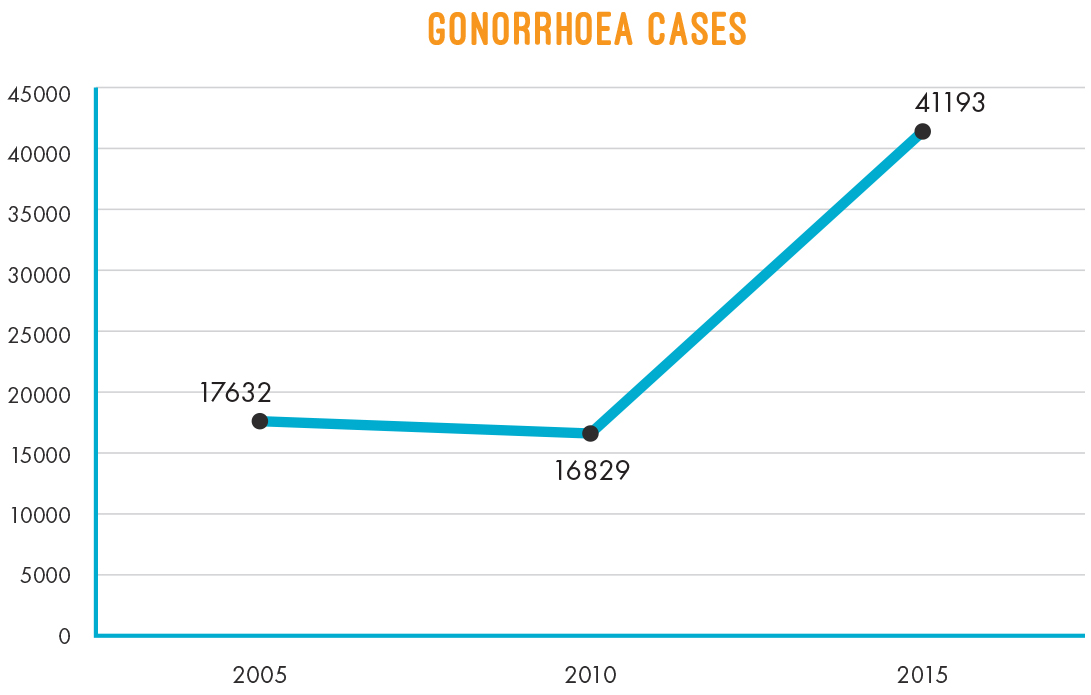HOW WE GOT HERE
Pornography, more commonly referred to as “porn”, consists of sexually explicit material, images or videos showing naked people or people engaged in sexual acts. In our modern world porn is viewable at the click of a button by anyone with an Internet connection.
Doubters of the dangers of pornography tell us that this area is nothing new, didn’t cavemen draw sexual images on their stone walls? So yes it is not new, but those early images compared to today’s constant stream of videos and images depicting every possible sexual act, available 24 hours a day, 7 days a week via portable devices isn’t exactly a like for like comparison.
In 1953, Hugh Heffner published the first copy of Playboy. Heffner made Porn mainstream by putting pornographic photos next to articles written by respected authors. Porn became much more accessible in the 1980’s with the first VCRs allowing people to watch porn at home. And then the Internet changed everything. Porn hit the Web and in a short space of time anyone with an internet connection was just a click away from the most graphic material available. The online porn industry exploded. Between 1998 and 2007, the number of pornographic websites grew by 1,800%. Today approximately 20% of all searches on mobile devices are for Porn!
It’s only about 10 years ago that our access to the internet was usually restricted to one computer in the house or a closely monitored classroom. Since then advances in technology have taken the internet from the confines of the lounge to anywhere you can get a mobile signal. In 2015 Ofcom reported that for the first time, smartphones had overtaken laptops as the most popular device for getting online in the UK. There can be no doubt that Porn has changed with technology and its makers have had to change the way they distribute it, not surprising when you consider that two thirds of people in the UK now own a smartphone (70% of people in the USA).
Porn has become more intense, violent, degrading, and humiliating over time. People are being exposed at younger and younger ages and as porn’s availability has risen, so have its devastating effects on people.
A leading US therapist recently wrote, pornography addiction “is no longer just a private problem. It is a public health problem.”
Where do we learn about sex? What impact do those influences have on us as people living in a modern world? We learn about sex from many sources, parents, schools, friends, siblings, the TV magazines, music videos, song lyrics and the Internet.
Education and awareness are the key for everyone but particularly Generation Y and Generation Z our younger internet dependent generations.
HEALTH
The one thing people will usually remember about school will be their first sex education lesson with the condom demonstration, unfortunately in most porn films there is no protection to be seen. Indeed, actors, writers, directors and producers of porn films in the US argued that using condoms would deny viewers the joy of watching unprotected sex. Is this really the message we want to be giving to young people?
When used correctly and consistently, condoms offer one of the most effective methods of protection against STIs. According to Public Health England over the past decade the diagnosis of gonorrhoea, syphilis, genital warts and genital herpes have increased considerably but most notably in men.
Young people are more likely to be diagnosed with an STI than older age groups. In 2015, among heterosexuals diagnosed, 15 to 24-year-olds accounted for 62% of those with chlamydia, 52% with gonorrhoea and 41% with genital herpes.
This epidemic is undoubtedly occurring because more and more people are engaging in unprotected, risky sex – often with several partners. If a generation of young people are getting their sex education from what they see online, then the message they are getting is that the only kind of sex is unsafe.
CRIMINAL ACTIONS AND PORN
Porn has become a ticking time bomb, we must do something about it and we must do it quickly.
Watching some types of pornography is illegal. For example, degrading pornography, violent pornography or anything that shows sexual behaviour with children (anybody under the age of 18) are all against the law. In the UK it is also illegal to produce, own or share photos of an explicit nature of anyone under the age of 18 (SEXTING). This means that even if both parties involved are teens, and both are interested in and active participants in sexting, both parties could still be held accountable for the photos.
REVENGE PORN - is the act of posting explicit photos or videos of another person online without the person’s consent, and with the intent of harassing or shaming them.
In April 2015 a new law was introduced which criminalised the activity of sharing sexually explicit images without the subject’s consent online – including social networks and text messages.
SEXTORTION - Also known as 'webcam blackmail', sextortion sees criminals use fake identities to con victims online and persuade them to perform sex acts in front of their webcam. Perpetrators then threaten to send recorded videos of the acts to the victim's family or friends unless they hand over money.
SEXTING - the process of sending sexually explicit photographs via mobile phones, is a phenomenon that many UK teenagers have embraced. This is unfortunate as sexting can have serious repercussions including losing control of your photos, becoming involved in bullying and even legal prosecutions.
SEXUAL HARASSMENT - The past few years have seen a rise in the number of instance of Sexual Harassment in schools and universities - is an increase in online Porn consumption the cause? Consent is rarely discussed in pornography – everyone is always already wanting sex, open to everything that is on offer, and the negotiation of sexual encounters is non-existent. This is particularly concerning given that young women aged 16-24 are the most likely to experience sexual assault.
Sexual harassment - wrong in the workplace, and equally so when the targets are pupils in schools or students at university. A recent report from the House of Commons women and equalities committee paints an alarming picture of extensive sexual harassment in schools across England. More than a fifth of girls aged seven to 12 have experienced sexual jokes from boys; almost a third of 16 to 18 year-old girls have suffered unwanted sexual touching. Staff in schools report frequent incidents of girls sending nude pictures to their boyfriends – then finding they have been forwarded to others.
Government guidance on sex education, drawn up 16 years ago, does not even mention pornography. The DfE has announced plans to update this and address modern challenges that young people face, which could be taught from September 2019.
www.bbc.co.uk/news/education-39116783
The emergence of an internet culture that treats young girls – and suggests that they treat themselves – as sexual objects must be recognised and challenged. Disturbingly, there is evidence that children are referencing pornography as a “benchmark” in sexual relationships.
In universities across the UK Fresher’s arrive for the start of the academic year, they expect to have the time of their lives. But what should be a fun time is often marred by a problem that is particularly evident among young people at university - sexual harassment and violence. A report by the National Union of Students (NUS) suggests that one in five students experience some sort of sexual harassment during their first week of term. Sexual comments, wolf-whistling when students walked into lectures, heckling in nightclub queues and jokes about rape were all cited as examples.
There are not specific statistics available to illustrate how big a problem there is with sexual violence among students, but earlier in 2016, Police Scotland said the number of recorded sexual crimes had increased by 6.2% on the previous 12 months - to 10, 273. In 2015 The Telegraph newspaper commissioned a Poll carried out by YouthSight, the specialist research group, the information collected showed that as many as half of female students and a third of their male counterparts knew of a friend or relative who had experienced intrusive sexual behaviour ranging from groping to rape. It found that 31% of female students polled said they had been the victim of inappropriate touching and one in eight male students had also been subjected to groping or unwanted advances. Overall 34% indicated they had experienced some form of assault or abuse.
The facts are out there for everyone to see, but as a society we still seem to bury our heads in the sand when the subject of pornography is raised. We need to change that way of thinking.
A CONTENTIOUS QUESTION?
Does pornography have the damaging power to turn normal, everyday men into murderers or rapists?
It’s a question often asked, and one that re-emerges every time a high-profile case hits the headlines where internet porn has cast a dark shadow over a violent crime.
Lord Thomas, The Lord Chief Justice gave evidence to MP’s looking back on a murder conviction.
Lord Thomas said the case “left me in no doubt at all that the peddling of pornography on the internet had a dramatic effect on the individual”.
“What is available to see and download is simply horrific and it played a real part in the way in which this particular murder was carried out.”
In June 2015 the BBC reported that a record number of people have been prosecuted in England and Wales for offences categorised as "violence against women and girls". A Crown Prosecution Service (CPS) report showed more than 107,000 such prosecutions in the year to April, up 16,000 (18%) on the previous year.
The figures are for crimes "primarily" against women, but male victims are also included. The report also showed there were the highest ever number of convictions for domestic abuse (68,601), sexual offences (7,591), honour-based violence (129) and child abuse (7,469).
In the report, prosecutors said a common theme was the use of the internet to contact potential victims and post indecent images and messages.
Arguments to block porn because of the criminal actions of a minority might be alarming for some, but what psychologists and medics increasingly agree on is the negative effect porn is having on young (and not so young) brains, and what constitutes normal or acceptable sexual practice as a result.
These views are at the forefront of modern psychology and as this is such a relatively new phenomenon, as a society we still don’t know what it means or where it might eventually lead.





